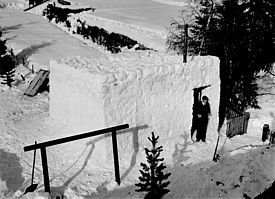The SLF issued its first avalanche bulletin on 21 December 1945. In the intervening period, avalanche danger forecasting has evolved substantially. Despite all the technical advancements, however, specialist knowledge and expert assessment remain crucial.
It’s an introduction that many radio listeners in Switzerland know well: “This is an announcement of the Swiss Institute for Snow and Avalanche Research on the Weissfluhjoch above Davos.” The Avalanche Bulletin, which is the best-known product of the SLF, has also been published in newspapers, broadcast on TV and read aloud over the phone. It is now disseminated primarily via the internet and the WhiteRisk app. The bulletin is Switzerland’s oldest natural hazard warning report and the subject of a statutory mandate, which the SLF has been executing for the last 75 years. The first issue, which appeared in the Neue Zürcher Zeitung newspaper and elsewhere, was published on 21 December 1945.
Avalanche warnings first emerged in Switzerland before the Second World War. Before then, in the 1930s, the Swiss Skiing Association began issuing an avalanche danger report for skiers at the weekends, and during the war the armed forces initiated a warning service for the troops. This took place in collaboration with the Snow and Avalanche Commission, which was founded in 1931 and became the Swiss Institute for Snow and Avalanche Research in 1942 (now the WSL Institute for Snow and Avalanche Research SLF). After the war the SLF assumed responsibility for avalanche warnings and established its civil avalanche warning service.
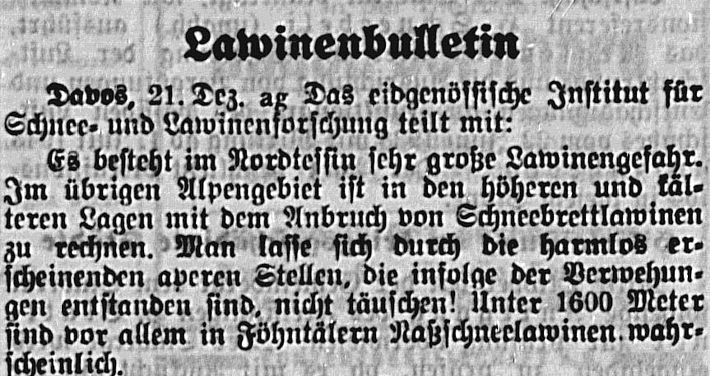
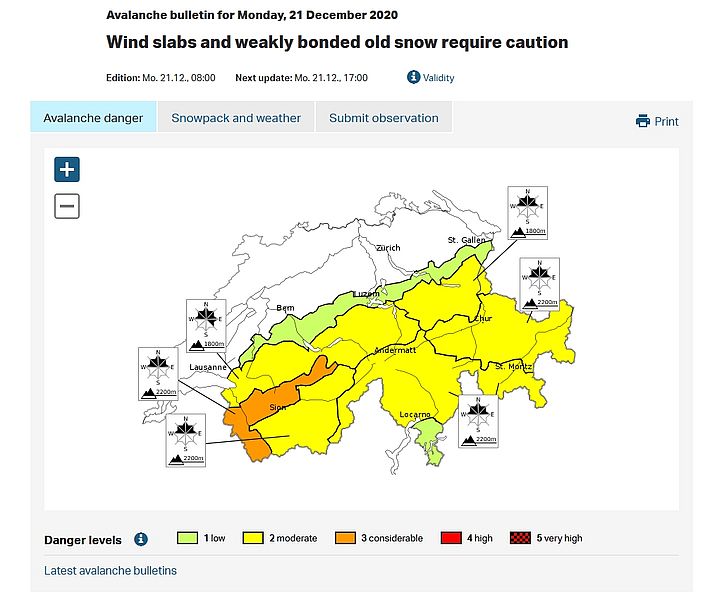
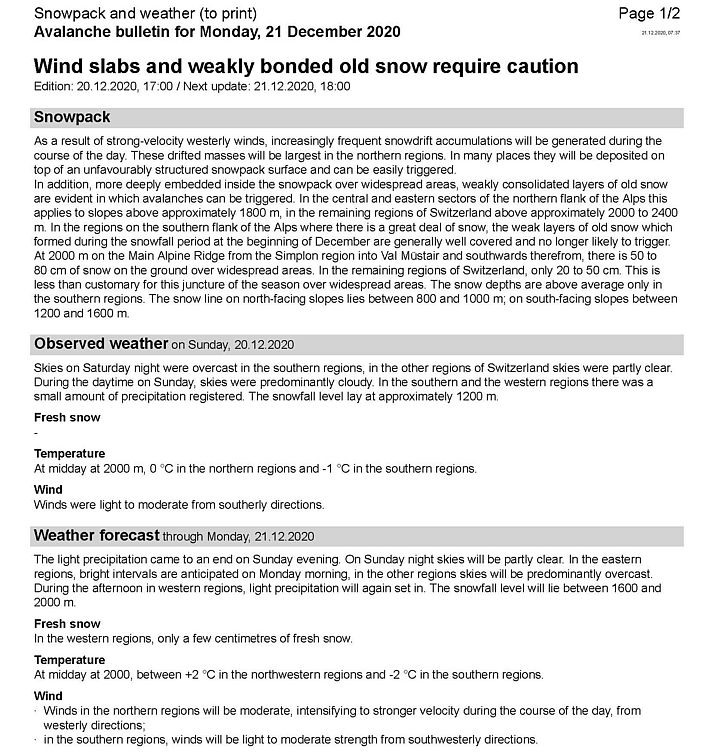
Data supplied by observers and automated measuring stations ¶
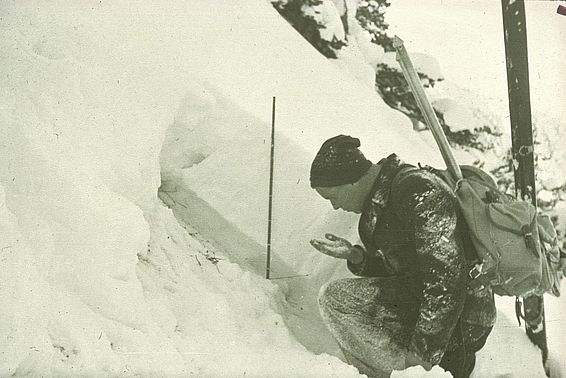
The warning service has undergone tremendous change in the last 75 years. In the early days, the avalanche danger was assessed on the basis of surveillance undertaken by a handful of researchers on the Weissfluhjoch and around 20 observers in the Swiss Alps. The team of observers has since expanded to encompass nearly 200 individuals, who are supported by a network of automated weather and snow-measuring stations. “We have a huge amount of data at our disposal these days,” says the head of the SLF avalanche warning service, Thomas Stucki. A duty roster assigns the task of analysing and evaluating all the information and producing the forecast for the following day to alternating groups of three of the eight forecasters in the team. The Federal Office for the Environment has been supporting the development of the avalanche warning service with funding for around 20 years. It has been instrumental in allowing the publication of an avalanche bulletin highlighting regional differences in avalanche dangers twice a day during the winter. From January 2021 the service is to be fully funded by the ETH Domain.
Forecasting improved by accurate weather modelling ¶
Avalanche forecasting accuracy has been enhanced significantly not only by a better understanding of the processes that give rise to avalanches, but also by the weather models of MeteoSwiss, which are becoming more and more precise. For example, the amount of fresh snow, which has a great influence on avalanche dangers, can now be predicted much more exactly. “Although many more backcountry skiers, off-piste skiers and snowshoe hikers are venturing into open terrain nowadays than 30 years ago, the trend in the annual number of avalanche victims has not increased, but decreased over this period,” comments Stucki. He attributes this to improved education and equipment, and ultimately to the Avalanche Warning Service and its products as well.
Machine learning techniques capable of analysing and evaluating huge quantities of data are expected to enhance forecasting even further in the coming years. The head of the service is nonetheless confident that humans will not be entirely replaced by machines, in particular because data cannot depict the full complexity of the interacting factors. Human know-how and experience will therefore remain essential for interpretation purposes. In consequence, avalanche forecasters’ expert knowledge will remain indispensable in the future as well.
Contact ¶
Links and documents ¶
Copyright ¶
WSL and SLF provide the artwork for imaging of press articles relating to this media release for free. Transferring and saving the images in image databases and saving of images by third parties is not allowed.
